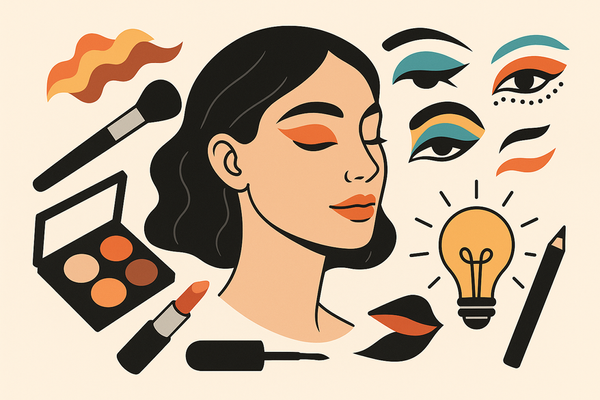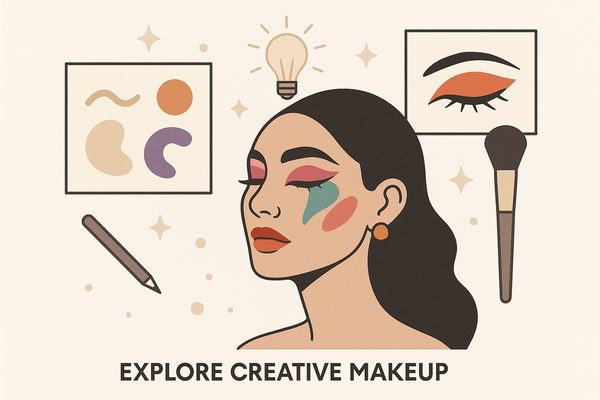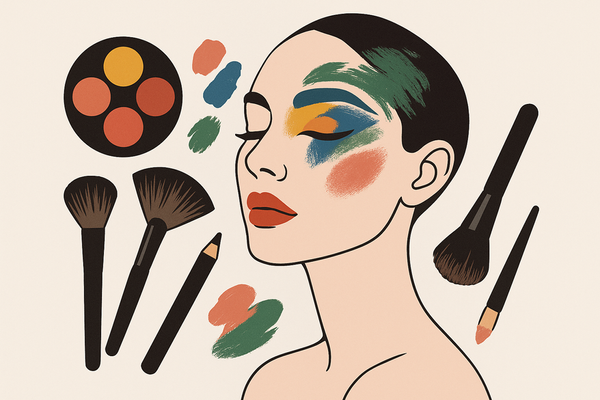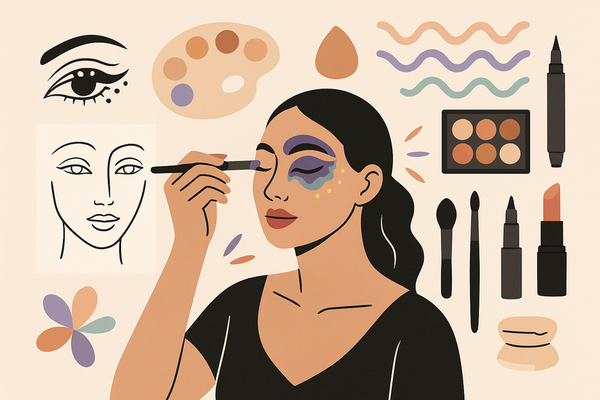Creative Makeup Designs: Transform Your Canvas with Bold Artistry
Explore creative makeup designs to transform your face into a canvas of bold artistry, with techniques and tips for both beginners and professionals.
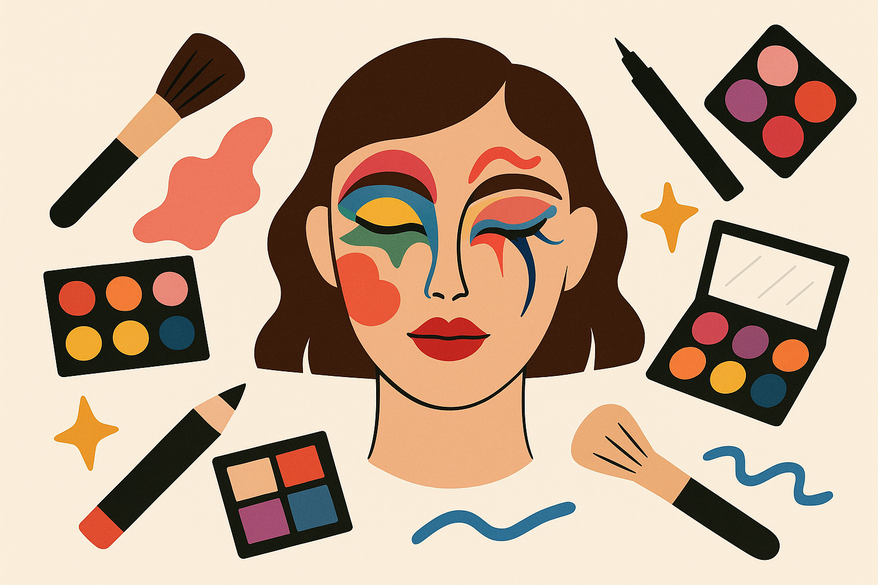
Estimated reading time: 6 minutes
Key Takeaways
- Canvas Concept: Creative makeup treats the face as a storytelling canvas rather than simple enhancement.
- Techniques & Tools: From color blending and graphic liner to texture play and SFX, specialized brushes and adhesives are essential.
- Trends: Optical illusions, animal motifs, pop art styles, and fantasy creatures dominate social media.
- AI Inspiration: Platforms like MakeupCheckAI generate prompts and palettes for bold experimentation.
- Tips for All Levels: Begin with simple designs, practice on charts, and scale up to prosthetics and editorial work.
Table of Contents
- Definition & Overview of Creative Makeup Designs
- Key Techniques & Tools
- Inspirational Ideas & Current Trends
- Tips for Beginners & Professionals
- Conclusion
Definition & Overview of Creative Makeup Designs
Creative makeup goes beyond subtle enhancement, using bold pigments, graphic elements, and even 3D effects to craft a visual story on your face. This approach treats your features as a living canvas, allowing for narrative-driven artistry.
What makes makeup “creative”?
- Conceptual storytelling: Colors, shapes, and textures build dramatic scenes instead of natural finishes.
- Expressive elements: Graphic lines, painted motifs, prosthetics―all unite under an artistic vision (Design Encyclopedia).
- Community impact: Viral challenges on platforms like Instagram and TikTok fuel global experimentation (exploring the art of creative and editorial makeup).
How it differs from traditional makeup:
- Traditional: Symmetry, natural finishes, subtle contour.
- Creative: Asymmetry, bright pigments, mixed textures (glitter, rhinestones, prosthetics).
Key Techniques & Tools
Mastering creative makeup starts with knowing the right methods and high-grade tools.
Color Blending
- Seamless gradients using creams and powders.
- Tools: Flat shader brushes, sponges, cream-to-powder palettes.
- Ideal for ombré eyes and sunset lips. (MakeupCheckAI guide).
Graphic Eyeliner
- Precise liners for bold shapes.
- Tools: Waterproof liquid liners, angled brushes, stencils.
- Creates wings with geometric cutouts or floating liners.
Texture Play
- Layer glitter, metallics, and 3D accents with adhesives.
- Tools: Cosmetic glitters, crystal gels, SFX adhesive.
- Use for crystal-encrusted brows or holographic cheekbones (Art on Your Face).
Face Painting & SFX
- Transforms features with paints and prosthetics.
- Tools: Spirit gum, silicone prosthetics, water-based paints.
- Great for alien looks, wounds, or animal snouts (editorial makeup).
Innovation Spotlight
- AI-powered design prompts generate mood boards and color schemes instantly.
- Holographic pigments shift through multiple hues under different lights.
- Minimalist geometric motifs for a modern, abstract finish.
Inspirational Ideas & Current Trends
Stay ahead of the curve with these standout styles (emerging makeup trend predictions).
- Optical Illusion: Shading tricks that make your skin look split or melting.
- Animal Motifs: Tiger stripes, butterfly wings, and bird plumage.
- Pop Art: Bold color blocks, comic dots, Lichtenstein outlines.
- Minimalist Abstract: High-impact shapes—dots, triangles, zigs—on bare skin.
- Fantasy Creatures: Mermaids with scale patterns, dragon accents.
- Emotional Storytelling: Painted tears or exaggerated brows to convey mood.
Tips for Beginners & Professionals
For Beginners
- Start small: simple dots, stripes, or a single graphic line (Art on Your Face).
- Practice on face charts or silicone wheels before live application.
- Patch-test new products and use gentle removers to protect your skin.
For Professionals
- Collaborate with photographers and stylists for editorial SFX shoots (The Best Ways to Get Inspired as a Makeup Artist).
- Draw from art history, nature, and digital illustration for unique concepts.
- Use digital mockups and lighting studies to refine wearable designs.
Personalization & Creativity
- Incorporate cultural motifs or personal stories into each look.
- Embrace “mistakes” as creative detours that can lead to signature styles.
- Invite clients or followers to explore the unexpected in makeup art.
For AI-driven inspiration, try Makeup Check AI to generate color combos and graphic elements in seconds.
Conclusion
Creative makeup is an art form that merges storytelling, technique, and innovation to transform the face into an expressive canvas. From foundational blending to advanced SFX, there are endless ways to experiment and share your bold designs. Whether you’re a hobbyist or a pro, challenge yourself to try new motifs, leverage AI tools for fresh ideas, and let your imagination run free.
Call to Action: Tag your next creative look with #MakeupCheckAI and join a community of artists redefining beauty.
FAQ
What is creative makeup design?
Creative makeup design uses bold colors, textures, and 3D elements to create conceptual looks that tell a story, going beyond traditional enhancement.
How can beginners practice safely?
Start on face charts, patch-test products, and use gentle removers. Focus on simple shapes before advancing to complex designs.
Which tools are essential?
Key tools include quality brushes, sponges, cream-to-powder palettes, waterproof liners, and SFX adhesives for texture play.
How do I find inspiration?
Explore art history, nature, digital illustration, and use AI platforms like AI-powered design prompts for fresh concepts.
Can I integrate SFX and prosthetics?
Yes—spirit gum, silicone prosthetics, and body paints allow for dramatic transformations like wounds, animal features, or fantasy creatures.

